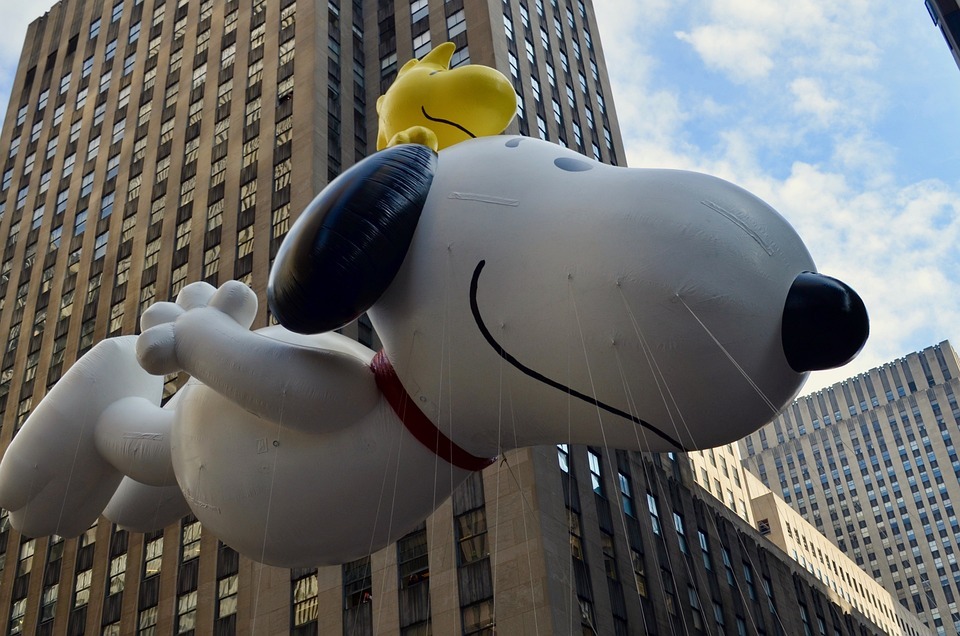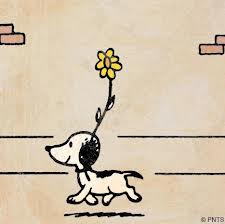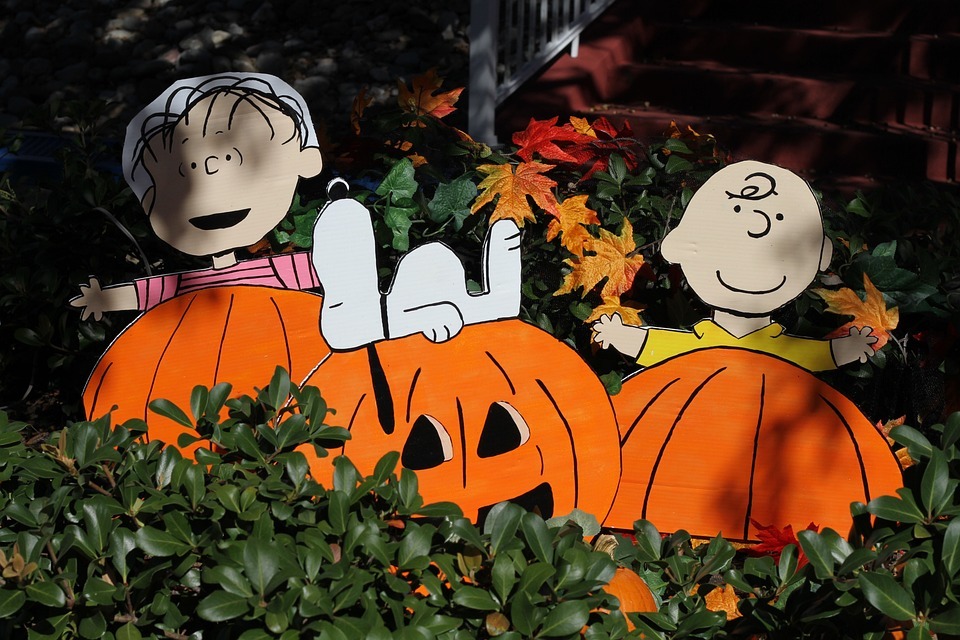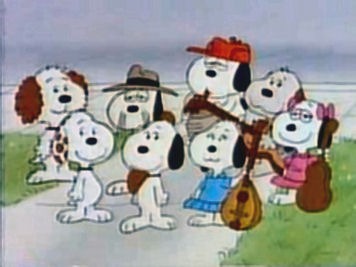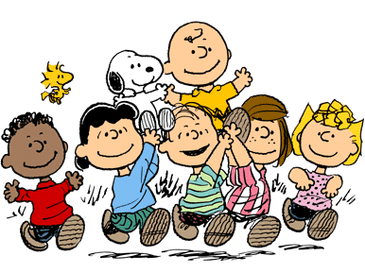Snoopy, the irresistible comic dog who has won the hearts of people everywhere for decades, welcomes you to his wondrous world. Snoopy’s rise to cultural icon status began with his first appearance in “Peanuts,” the iconic comic strip by Charles M. Schulz, and has continued with his appearances in films, television series, and merchandising. It’s no surprise that people of all ages find him charming; he has an irresistible combination of wit, daring, and charisma. In this post, we’ll look at Snoopy’s intriguing background, various roles and experiences, and what makes him such a timeless and popular character. So come along and learn everything there is to know about the one and only Snoopy!
Short Background About Snoopy
Snoopy is unquestionably the most known character in Charles M. Schulz’s comic strip Peanuts. Snoopy has grabbed the hearts of readers all across the world since his first appearance in the comic strip on October 4, 1950. He is an anthropomorphic beagle, which means he is a dog with human-like characteristics such as walking on two legs, thinking and expressing emotions like a human, and participating in activities not normally associated with dogs.
Surprisingly, in some places, Snoopy is more well-known than Charlie Brown, the main character of the Peanuts comic strip. He is well-known for his eccentric attitude, love of adventure, and sense of humor, which have helped him become a cultural legend.
Snoopy’s first designs were inspired by Schulz’s childhood dog, Spike. Throughout his life, Schulz had several dogs, and he frequently incorporated their personalities and behaviors into the Peanuts comic strip. Spike’s antics, in particular, provided inspiration for Snoopy’s cheeky and fun personality.
History of Snoopy’s Character
Since his first appearance in the Peanuts comic strip on October 4, 1950, Snoopy’s character has evolved. At the time, he was one of the four original characters, along with Charlie Brown, Patty, and Shermy. Snoopy was initially depicted as a conventional pet dog, napping or resting on his doghouse.
After his first appearance in thought bubbles on March 16, 1952, when his thoughts and feelings became visible to readers, Snoopy’s popularity skyrocketed. This was a big change in the comic strip since it gave readers an inside glimpse of Snoopy’s personality and his distinct perspective on the world.
Snoopy’s personality continued to grow over time. On January 9, 1956, he was shown walking on his hind legs for the first time, sliding on a sheet of ice after Shermy and Lucy had done so. This was the start of Snoopy’s anthropomorphic makeover.
On October 10, 1965, Snoopy assumed his most famous guise, the World War I Flying Ace. This marked the beginning of Snoopy’s many imaginative adventures, in which he frequently acted as the hero, facing the Red Baron and other imaginary foes.
Snoopy’s popularity grew, eventually becoming a cherished icon in popular culture. He first appeared as a character balloon in Macy’s Thanksgiving Day Parade in 1968, and he has been a regular in the parade ever since, frequently dressed as an ice skater, jester, or astronaut.
On February 13, 2000, Snoopy made his final appearance in the Peanuts comic strip, perched on top of his doghouse, typing Charles Schulz’s parting letter to his viewers. Despite his final appearance in the comic strip, Snoopy’s legacy lives on through many appearances in TV series, movies, and memorabilia, and he remains one of the popular culture’s most beloved and iconic figures.
The Personality Traits of Snoopy
Many people adore Snoopy because of his loyalty, imagination, and good attitude. He is frequently described as having an active fantasy life and can be seen picturing himself in numerous roles and occupations, including writer, “Joe Cool” college student, attorney, and World War I flying ace. This last identity has come to be associated with Snoopy, as he is frequently represented wearing an aviator’s helmet, goggles, and a scarf while brandishing a swagger stick.
Despite his occasional selfishness and laziness, Snoopy is devoted to his master, Charlie Brown, whom he affectionately refers to as “the round-headed kid.” Snoopy, on the other hand, is known to mock Charlie Brown on occasion, bringing a sense of fun to their dynamic. Snoopy’s love for cookies, particularly the chocolate-chip form, is underlined in 1990s comic strips, and he indulges in huge chocolate-based meals and snacks with resistance to theobromine unheard of in other dogs.
Snoopy’s imagination frequently follows a similar pattern, with him posing as something “world famous” but ultimately failing. His short stories are never published, and his Sopwith Camel biplane is repeatedly shot down by his fictitious adversary, the German flying ace known as the “Red Baron.” This portrayal of Snoopy’s character demonstrates that he must retreat into his imaginative world in order to live and escape from his dull and terrible life as a dog.
Although Snoopy is known for his imaginative antics, he is not depicted in comic strips or animated adaptations as speaking aloud. Instead, his very articulate thoughts are displayed in thought balloons, and his moods are communicated by groans, yelps, growls, sobbing, laughter, and other monosyllabic noises. Bill Melendez, who first appeared as Snoopy on The Tennessee Ernie Ford Show, provided Snoopy’s vocal effects in the majority of animated productions. Snoopy’s views are verbalized by Robert Towers and Cameron Clarke in the animated productions of the musicals such as You’re a Good Man, Charlie Brown, and Snoopy!!! The Musical, respectively.
Finally, Snoopy’s famous doghouse, which he uses as a base for many of his fanciful escapades, defies physics by appearing to be larger on the inside than the outside. This lends an element of fun and inventiveness to the character and has become a feature of his distinctive images.
Snoopy Actually Has Siblings
The existence of Snoopy’s siblings adds complexity to Snoopy’s character and past. Spike, the most frequently seen sibling, is portrayed as a laid-back, amiable desert dweller. Andy is a writer and storyteller, and Marbles is a rogue who often bothers Snoopy for food. Belle, the sole female sibling, is portrayed as sophisticated and appropriate, frequently sporting a bow on her head. On the other hand, Olaf is described as an unsightly character often dubbed “Ugly Olaf.”
Snoopy’s siblings were gradually introduced to the comic strip, with Schulz introducing them as it evolved. Snoopy was initially depicted as an only dog, but later strips included the concept of Snoopy having siblings. His siblings originally appeared in the family reunion strip in 1965, albeit not named at the time. In his memoirs, Snoopy stated that he was one of seven puppies, and the final count of eight siblings was reached in 1972.
Schulz subsequently recognized that introducing Snoopy’s siblings was a mistake. He believed that the addition of Belle and Marbles to the strip detracted from Snoopy’s special relationship with the children in the strip. Schulz also believed that incorporating too many animal characters detracted from Snoopy’s distinctiveness as a character. Schulz adored Spike and thought he worked well in the strip as long as he stayed in the desert.
Snoopy’s Owner-Pet Relationship with Charlie Brown
Despite his occasional disrespect for Charlie Brown, Snoopy has shown affection and loyalty to his owner throughout the course of the Peanuts comic strip. In fact, Snoopy has been known to defend Charlie Brown, as seen by the time he left a game of Ha-Ha Herman with him after Peppermint Patty ridiculed him. Similarly, when a bully stole Charlie Brown’s signed baseball and challenged him to a fight over it, Snoopy assisted him in retrieving it.
Snoopy’s affection for Charlie Brown is also reflected in his desire to choose Charlie Brown’s happiness over his own. When Charlie Brown tells him that he can no longer devote himself to making Snoopy happy, Snoopy responds, “Don’t worry about it. “I was already content.” This demonstrates that Snoopy prioritizes Charlie Brown’s happiness over his own and is willing to sacrifice his own happiness for the sake of his owner.
It’s worth noting that in the early Peanuts strips, Charlie Brown did not possess Snoopy. In fact, it was unclear who, if anyone, owned Snoopy. He was said to belong to Patty or Shermy at various points. However, in the November 1 and 3, 1955 comic strips, Charlie Brown was first portrayed as being responsible for Snoopy. Snoopy was not officially identified as Charlie Brown’s dog until September 1, 1958.
Despite the early ambiguity about his ownership, Charlie Brown’s relationship with Snoopy remained a central part of the Peanuts comic strip. This relationship was explored further in various Peanuts TV specials and movies, including “Snoopy, Come Home,” which depicted Charlie Brown’s acquisition of Snoopy from the Daisy Hill Puppy Farm.
Reception of Snoopy’s Character and the Comic Strip “Peanuts”
TV Guide named Snoopy and Charlie Brown as the eighth greatest cartoon characters of all time. However, some critics argue that the quality of the strip declined after the 1960s, with the increased emphasis on Snoopy being a contributing factor. While Snoopy was popular for licensing, some believe he was not fully involved in the relationships that drove the strip’s Golden Age and that his later strips were anomalies.
Snoopy’s popularity as a licensed character inspired Jim Davis, the creator of Garfield, to base his comic strip around a cat. In addition, a popular toy named The Snoopy Snowcone Machine was released in the 1980s and was later replicated in the 2010s by Cra-z-art.
Whether you grew up reading Peanuts comics or met Snoopy through TV specials, movies, or products, there’s no disputing Snoopy’s enduring allure. Snoopy has become a beloved figure who continues to appeal to audiences of all ages thanks to his unlimited imagination, unique demeanor, and everlasting loyalty. So, go ahead and spend some time exploring Snoopy’s world and discovering all of the joy and amusement he has offered to fans over the years.

